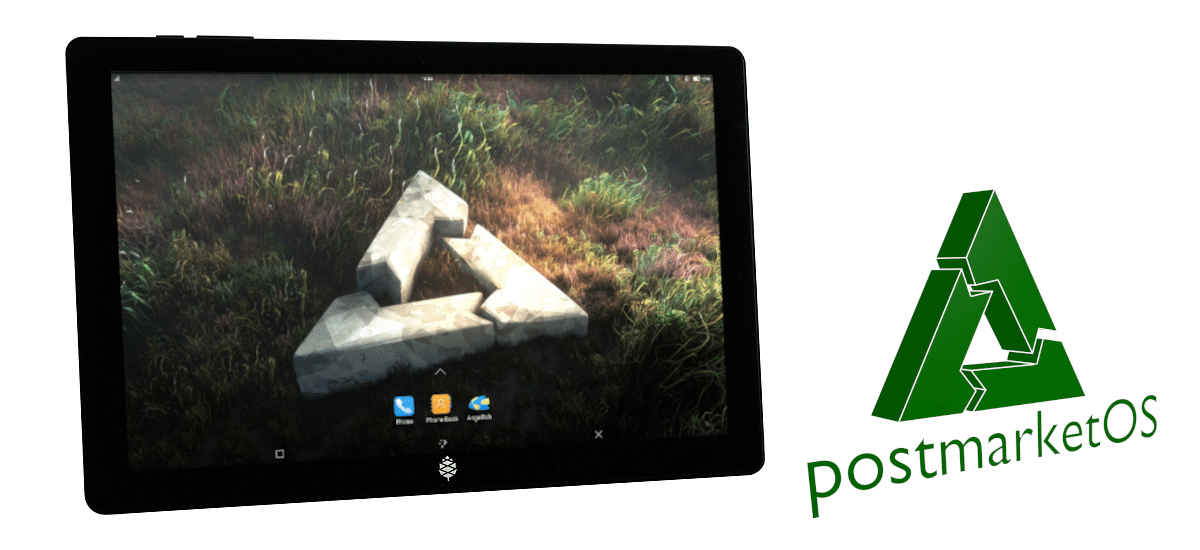
There is still a long way to go for the PineTab to become a real option. There are several interesting proposals, but most are focusing much more on mobile phones, such as the PinePhone that PINE64 also makes. Manjaro, which is the operating system chosen by the pineapple (pine) company, does not even go horizontal in its Plasma Mobile edition, something it does perfectly postmarket OS.
By this I do not mean that postmarketOS is the perfect operating system, at least for this tablet. All systems have their positive side and their negative side, and if we put together all the good things in each one, it would be fine: the Ubuntu Touch desktop, some Plasma Mobile options and the good functioning of postmarketOS or Arch Linux. It's hard to imagine, but I do believe that in the future everything will be better. Plasma Mobile it has things that I like, and the best way to test it on the PineTab is with postmarketOS.
postmarketOS offers pre-built image and an installer
Before we start, we have to comment that postmarketOS is based on Alpine Linux, a minimalist version of Linux that is focused on security. The package manager it uses is APK (Alpine Linux package management), whose commands you can see in this page of your wiki. Although the most important thing is, there is probably less software than in the Debian / Ubuntu or Arch Linux / Manjaro repositories. But, taking into account that we are talking about a tablet, surely we do not miss anything.
With the above explained, the steps to follow to install postmarketOS on the PineTab are very simple. The only difference is that it is available in two versions, one with an installer in which we configure a few parameters and another pre-built image that is to install and use.
Installation Process
- Let's go to the developer website and we download an image. We can choose the installer's or the pre-built one. There are also two versions, one for a more stable experience and the other for more updates, which is supposed to make it less stable. From my experience in the different mobile operating systems for the PineTab, the truth is that there is not much difference, so I recommend the one that is updated the most that will also fix the bugs sooner. NOTE: it is my opinion from what I have seen and it is what I prefer.
- We unzip the image.
- We open any software to flash the SD card, like Etcher, and we burn the image to the microSD.
- We take the card out of the PC and put it in the PineTab.
- We turn on the PineTab. If we have chosen the pre-built image we are done. If we have chosen the installer, we continue, but notice that some steps take time. You have to be patient.
- On the welcome screen, we choose «Continue».
- In the next one, we choose if we install postmarketOS in the internal memory (eMMc) or in the external one (SD card).
- Now we have to put a 5-digit PIN on it and confirm it.
- In the next step we can configure if we want to activate SSH or not. If we never use it, better deactivate it.
- We can then encrypt the data. It is something that I would do if it were my main phone, but not on a tablet where I will not have sensitive data or I am not leaving home.
- Finally, we wait a while for the installation to finish, and a while for it to start for the first time.
Worth?
Well, I would answer this question with another: with respect to what? If we want to use Plasma on the PineTab, I think so for the simple reason that we can use it vertically and horizontally. Also, you can install Kodi and it works, which has come to surprise me; This is the first time that I have installed it on the PINE64 tablet and not only does it install, but also the video looks relatively good. On the other hand, for example, Firefox does not remove the keyboard and angel fish it has not yet allowed me to watch anything on YouTube.
I think the developers are focusing too much on the complete PineTab, that is, with the keyboard included. I do not have it for the simple reason that it is not in Spanish, and sometimes I have to connect one that I bought for my Android TV. But it's good to see that, little by little and like Kodi, things start to work. I am 90% convinced that the future of tablets goes through Linux. At the time.
I have it with a keyboard, and the Manjaro KDE did not give me that problem of not being horizontal in the last version I tried (if in the previous one, and if other problems).
I have abandoned it since December waiting for a new version - the worst thing is that the updates are not going quite well, and it is better to reinstall the new image, so far it has happened to me with all -.
I hope that since the Manjaro plasma has been chosen for the default pinephone, we will soon have a more advanced pinetab version - for that reason - than its competition, including an image with Lomiri, (ub ports) that will be more practical and can be added programs from the Manjaro repository.
Even so, it is necessary that among all the Linux arm they bet on the compilation of a browser, be it Firefox, which will hardly, Chromium, Midori or derivatives, so that it can be enjoyed at least as if they were with Chrome OS.
And let's wait for the versions with Armv8 WiFi6 (and 5G on the mobile) to go smoothly.